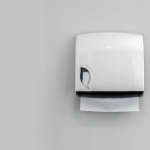How effective is DHI Choi for hair transplants?
Warning: Undefined variable $post in /home/dietofli/public_html/wp-content/plugins/code-snippets/php/snippet-ops.php(584) : eval()'d code on line 3
Warning: Attempt to read property "ID" on null in /home/dietofli/public_html/wp-content/plugins/code-snippets/php/snippet-ops.php(584) : eval()'d code on line 3
The estimated reading time is 3 minutes
Warning: Undefined variable $post in /home/dietofli/public_html/wp-content/plugins/oxygen/component-framework/components/classes/code-block.class.php(115) : eval()'d code on line 3
Warning: Attempt to read property "ID" on null in /home/dietofli/public_html/wp-content/plugins/oxygen/component-framework/components/classes/code-block.class.php(115) : eval()'d code on line 3
Hair transplants have come a long way since their pioneer beginnings as FUT. Since then, many of the flaws in the initial process of FUT motivated the need to find a more efficient technique. shortly after FUE emerged, which in comparison to FUT, was groundbreaking. From then on, many attempts to improve on the current FUE techniques have begun and produced various techniques with the most popular known as DHI Choi. But what is DHI Choi and how does it differ from traditional FUE? Most importantly is it more efficient? Read along to find out.
FUT, FUE, and DHI Choi
To fully comprehend how DHI works, one needs to understand hair transplants from its beginnings as FUT. FUT is short for follicular unit transplantation and was the first procedure of hair restoration to emerge.
FUT
In FUT, to extract donor hair from donor regions doctors have to surgically remove an entire strip of skin from the scalp. The nature of the method requires the stitching of the wound which later leaves a linear scar limiting the patient's choice of hairstyle in the future. Moreover, the process of extraction in FUT increases the risk of infection and requires a longer period of recovery. In addition, it causes nerve damage that may or may not be permanent.
In short, FUT had many side effects that had the treatment disappear in many markets except for a few that still provide the technique for its efficiency costs-wise.
FUE
Given the invasive nature of the extraction process in FUT, the medical field wanted to enhance the technique of harvesting. In FUE or follicular unit extraction, donor hairs are extracted individually. First, the hair is isolated with a micro-punch and later pulled out with forceps. The process is then similar in both FUE and FUT, where after extraction the grafts are preserved and channel-opening on the recipient site begins. After the incisions are made, the extracted hair is inserted in them and the procedure ends.
DHI Choi
DHI Choice is an attempt to bring better results through enhancing the remaining steps in hair transplants. The technique merges the incision making step and implantation into one. Once the donor hairs are extracted they are placed in a pen-like needle that penetrates the skin while simultaneously injecting the follicular units.
The technique is time-efficient. However, the technique increases the risk of technical error, which when considering the sensitive grafts is not an ideal approach. Particularly with a surgery where the success relies primarily on the number of donor hair, posing a higher risk of damage on delicate grafts is not what you need.
In closing
While DHI Choi is more time-efficient, it also increases the risk of failure in hair transplants by increasing mechanical risk. There are better variants of FUE with procedures that do not pose any risk on the grafts while also being time efficient.
If you would like to know more about hair transplants, contact vera clinic for a virtual consultation session with medical specialists.














